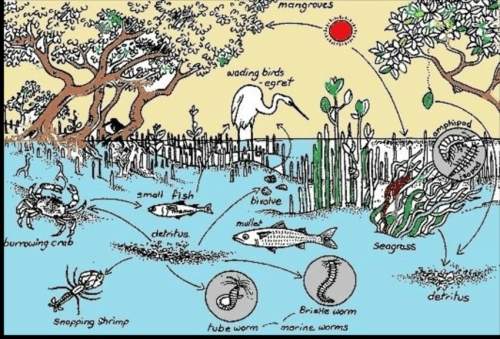

Answers: 2


Another question on Biology


Biology, 21.06.2019 20:00
Two male mice, which we will call male a and male b, are both phenotypically normal. male a was from a litter that contained half phenotypically normal mice and half dwarf mice. the mother of male a was known to be homozygous for the normal igf2 allele. male b was from a litter of eight mice that were all phenotypically normal. the parents of male b were a phenotypically normal male and a dwarf female. male a and male b were put into a cage with two female mice that we will call female a and female b. female a is a dwarf and female b is phenotypically normal. the parents of these two females were unknown, although it was known that they were from the same litter. the mice were allowed to mate with each other, and the following data were obtained: female a gave birth to three dwarf babies and four normal babies. female b gave birth to four normal babies and two dwarf babies. which male(s)mated with female a and female b? male a with both females male a with female b, and male b with female a male a with female a, and male b with female b could not be determined male b with both females
Answers: 3

Biology, 22.06.2019 00:20
1. variations in a population of moths allow for some of its members to be able to adapt to environmental changes. the better adapted of the moths will be able to survive the change and thus prevail as the “fittest” of the species. (a) describe three mechanisms in which variation can occur within a species population. (b) explain which mechanism or mechanisms would be responsible for the survival of a population of peppered moths better than white moths in an environment affected by industrial soot. justify your answer.
Answers: 1

Biology, 22.06.2019 03:00
To answer this question, researchers studied populations of the dusky salamander (desmognathus ochrophaeus) living on different mountain ranges in the southern appalachian mountains. the researchers tested the reproductive isolation of pairs of salamander populations by leaving one male and one female together and later checking the females for the presence of sperm. four mating combinations were tested for each pair of populations (a and b)—two within the same population (female a with male a and female b with male b) and two between populations (female a with male b and female b with male a). the proportion of successful matings for each mating combination was measured. for example, when all the matings of a particular combination were successful, the researchers gave it a value of 1; when none of the matings were successful, they gave it a value of 0. then the researchers calculated an index of reproductive isolation that ranged from 0 (no isolation) to 2 (full isolation). the reproductive isolation value for two populations is the sum of the proportion of successful matings of each type within populations (aa + bb) minus the sum of the proportion of successful matings of each type between populations (ab + ba). the table provides data for the geographic distances and reproductive isolation values for 27 pairs of dusky salamander populations.
Answers: 1
You know the right answer?
How many bacterial restriction enzymes are there available to scientists?...
Questions

Mathematics, 14.02.2021 08:40

Mathematics, 14.02.2021 08:40

Mathematics, 14.02.2021 08:40

Arts, 14.02.2021 08:40

Mathematics, 14.02.2021 08:40



Mathematics, 14.02.2021 08:40







Social Studies, 14.02.2021 08:40

Advanced Placement (AP), 14.02.2021 08:50

Chemistry, 14.02.2021 08:50


History, 14.02.2021 08:50

English, 14.02.2021 08:50




